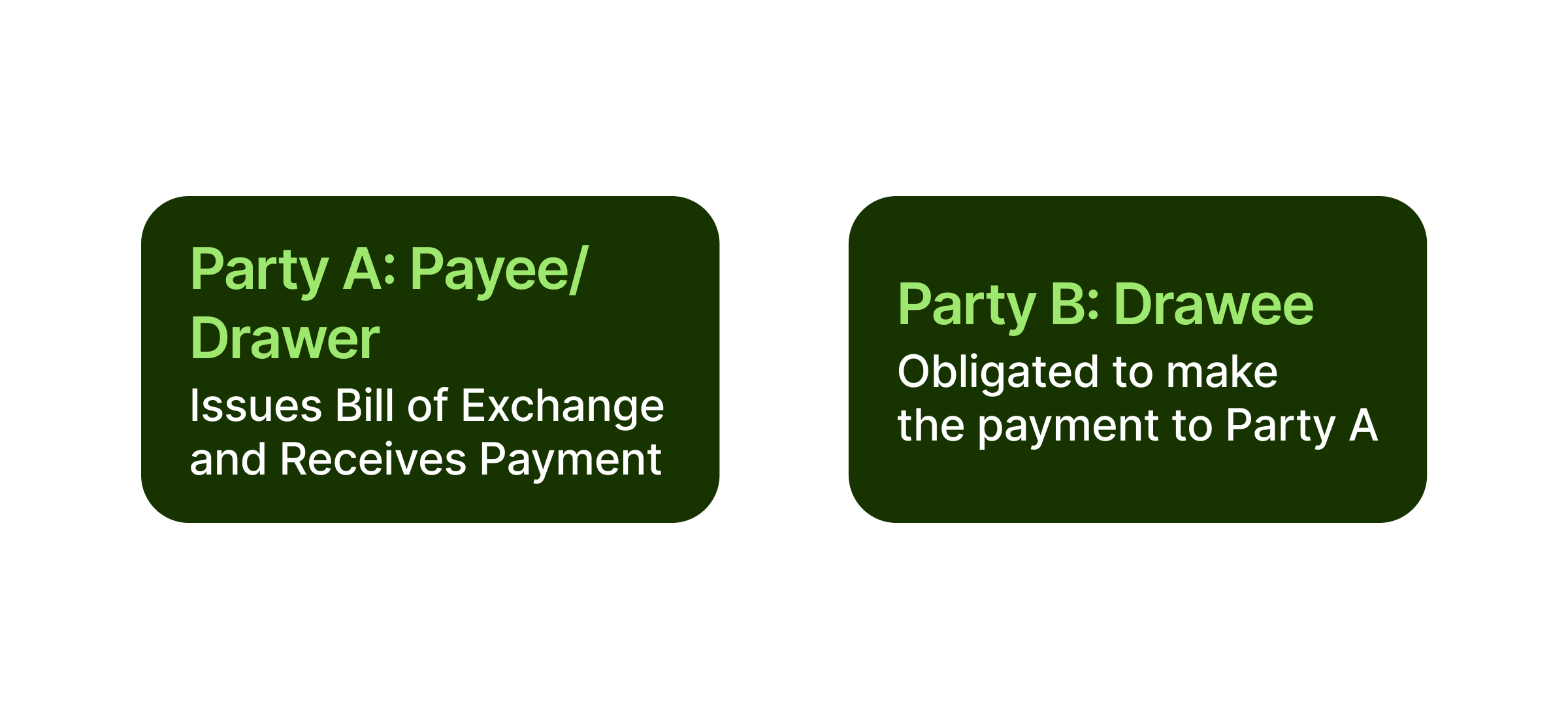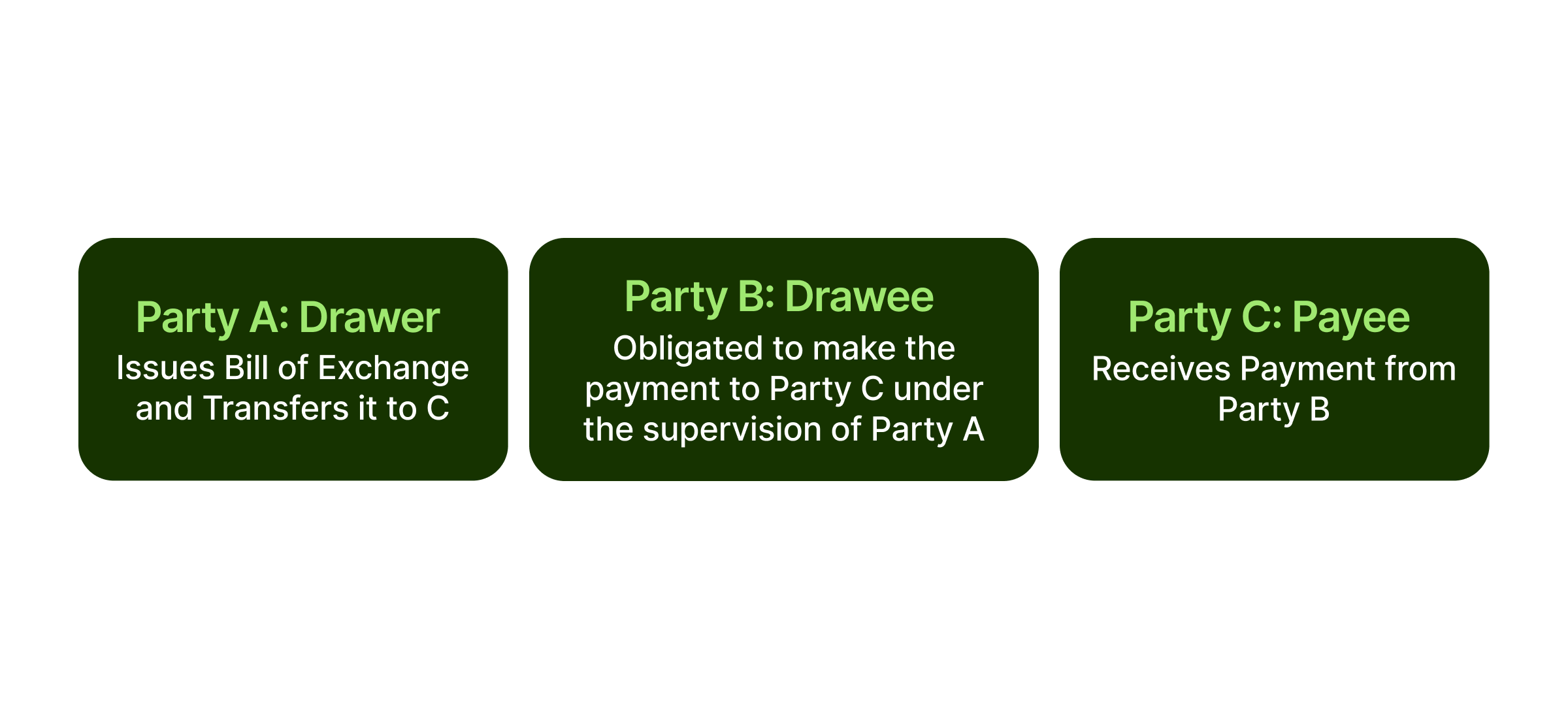Austria corporate tax - guide for international expansion
Learn about the corporate tax system in Austria, its current rates, how to pay your dues and stay compliant, and best practices.

If you’re running a business that’s involved in importing and/or exporting, there are a number of financial instruments available to both buyers and sellers. These are aimed at protecting the parties from default risk and foreign exchange fluctuations.
Bills for collection or a bill of exchange is one method that helps provide seamless trade by reducing ambiguity related to amount and time of payment. In this article, we will explain what a bill of exchange is, how it works and what flexibility it offers to the parties involved. We’ll also outline the benefits of a Wise Business account and how it could provide a cheaper way to pay suppliers abroad.
Discover more about Wise Business💡
| 📑Table of contents |
|---|
A type of contract between a buyer and seller (or importer and exporter), a bill of exchange is commonly found when goods are bought and sold between countries¹. This is because international trade has more risk than trading domestically. Differences in legislation that are especially important in a post-Brexit trading environment, as well as the logistics of moving goods internationally can make both the importer and exporter more vulnerable.
A bill of exchange is also used to protect the transaction. It acts as a binding agreement between buyer and seller where the buyer agrees to pay a fixed amount of cash at a predetermined date or upon demand from the seller. It’s usual for banks to act as third parties in bills of exchange to ensure payment and receipt of funds.
It also ensures that there is no ambiguity in the payment amount or the time at which the payment is to be made. If a bill of exchange isn’t cleared within a specific time period, then it may also accrue interest. As it’s transferable, it can also be traded at a discount to another party, enabling the exporter to procure funds in advance.
Another advantage of a bill of exchange is that traders can proceed with or without the involvement of a third party for intermediation.
The main difference between a bill of exchange and a promissory note is that the former is transferable and can bind one party to pay a third party that was not involved in its creation. A common form of promissory note are banknotes. While a bill of exchange is issued by a creditor and orders a debtor to pay a set amount within a given period, a promissory note is issued by the debtor as a promise to pay an amount of money within a given timeframe.
In the previous section, the parties were referred to as importers and exporters for ease of understanding. However, terminologies can change in the context of a bill of exchange.
The party writing the bill, generally the exporter, is termed as the payee - the party obligated to make the payment is called the drawee. There may also be a third party involved known as the drawer who acts as an intermediary for enforcing the bill of exchange.³
The drawer and the payee are the same if the payment is received by the payee. However, if the bill is transferred, the issuer becomes the drawer, and a new payee is involved. Let’s walk through this using the example below:
Case 1: Party A issues Bill of Exchange and receives payment from Party B

Case 2: Party A issues Bill of Exchange and transfers it to Party C

The best way to understand the process is with the help of an example. Consider a European car manufacturer:
Car Manufacturer (M) that wants to import steel from a Chinese supplier (S).
S will issue a bill of exchange that will outline the amount and the time on which the payment is to be made.
S then exports the steel to M.
After the stipulated time has passed, S presents the bill to M, and the European manufacturer has to make the payment to S
In this example, S is the drawer and payee while M is the drawee.
Now suppose S wants money in advance. It can transfer the bill of exchange to a third party (T) in exchange for cash. The amount received by S would likely be less than stipulated in the bill of exchange due to discounting. T is now the new payee and can present the instrument to M.
A bill of exchange can be differentiated based on the entity issuing unit. They are:4
1. Bank Draft: This is issued by a bank that guarantees payment to the payee
2. Trade Draft: If a trading entity issues the bill of exchange, then it is classified as a trade draft
Depending on when the bill can be presented, a bill of exchange can be classified as:
1. Sight Draft: The payment has to be made when the bill is presented to the drawee
2. Time Draft: The payment has to be made at a specific time point mentioned in the bill of exchange. The future date is generally a few days after the importer receives the product.
An accommodation bill is one in which the drawer does not receive any payment from the drawee. The drawer only acts as an intermediary for the transaction to go through.
With a Wise Business account you can pay suppliers all over the world using the mid-market exchange rate and low, transparent fees for currency conversion.
You can open a Wise Business account for your UK registered business online or in-app easily, and then order a Wise Business debit card for convenient online and in person payments. You’ll be able to hold and exchange 40+ currencies in your account, and receive payments with local details for a selection of major currencies - making it easier to pay and get paid in foreign currencies.
If you ever need to pay a supplier directly, you can also pay foreign business invoices with Wise. Whatever you need your Wise Business account for, there are no ongoing fees, and currency conversion uses the mid-market rate - when you send, spend, receive or exchange foreign currencies.
Get started with Wise Business🚀
Sources used:
Last checked on 27 December 2021
Disclaimer: The UK Wise Business pricing structure is changing with effect from 26/11/2025 date. Receiving money, direct debits and getting paid features are not available with the Essential Plan which you can open for free. Pay a one-time set up fee of £50 to unlock Advanced features including account details to receive payments in 22+ currencies or 8+ currencies for non-swift payments. You’ll also get access to our invoice generating tool, payment links, QuickPay QR codes and the ability to set up direct debits all within one account. Please check our website for the latest pricing information.
*Please see terms of use and product availability for your region or visit Wise fees and pricing for the most up to date pricing and fee information.
This publication is provided for general information purposes and does not constitute legal, tax or other professional advice from Wise Payments Limited or its subsidiaries and its affiliates, and it is not intended as a substitute for obtaining advice from a financial advisor or any other professional.
We make no representations, warranties or guarantees, whether expressed or implied, that the content in the publication is accurate, complete or up to date.

Learn about the corporate tax system in Austria, its current rates, how to pay your dues and stay compliant, and best practices.

Learn about the corporate tax system in Botswana, its current rates, how to pay your dues and stay compliant, and best practices.

Learn about the corporate tax system in Chile, its current rates, how to pay your dues and stay compliant, and best practices.

Learn about the corporate tax system in Montenegro, its current rates, how to pay your dues and stay compliant, and best practices.

Learn about the corporate tax system in Monaco, its current rates, how to pay your dues and stay compliant, and best practices

Learn about the corporate tax system in Costa Rica, its current rates, how to pay your dues and stay compliant, and best practices.